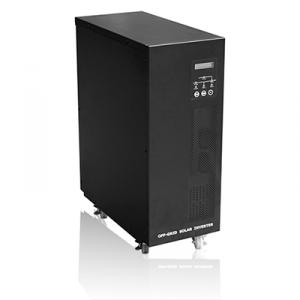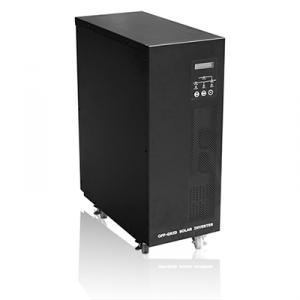Off-Grid Solar Inverter 3KW-8KW CE Approved AAA Quality with Best Price
- Loading Port:
- China main port
- Payment Terms:
- TT or LC
- Min Order Qty:
- 1 pc
- Supply Capability:
- 1000 pc/month
OKorder Service Pledge
OKorder Financial Service
You Might Also Like
Off-Grid Solar Inverter 3KW-8KW
EA-GF series products are on the basis of green energy use and equipment electricity need for remote area, combing the electricity characteristics of household appliances, communication station equipment and computer peripheral equipment. They have the function of energy conservation and environment protection. They adopt MCU control technique, having various kinds of function such as multi-setting mode, MPPT control, voltage stabilization on line, short-circuit protection, inverter frequency adaptive, output overload, battery charging management, monitoring etc. With display of LCD and LED, all the parameters and running status could be visible. Intelligent monitor is available via RS232 &USB connecting with PC, while remote control via RS485 &SNMP. EA-GF series products are the ideal power supply delivered with excellent performance, high stability, high reliability and high practical applicability
● Multi-setting
※PV priority mode or AC priority mode
※Choose the charging current based on the configured capacity of the battery
● High reliability: Double MCU digital control
※Independent MPPT (Maximum Power Point Tracking) control microprocessor system
※Independent inverter microprocessor control system
● Isolated and pure sine wave technology
● LCD+LED display
● Wide input range
● High-speed synchronous conversion
● Friendly alarm system
● Online protection function
● Frequency auto adaptive
● Intelligent No-load auto shutdown technology (optional)
● Intelligent monitoring (RS232, USB, or SNMP card, optional)
Model | GF3000 | GF4000 | GF3000 | GF5000 | GF6000 | GF8000 |
Power | 3KW | 4KW | 3KW | 5KW | 6KW | 8KW |
Battery Voltage | 96Vdc | 192Vdc | ||||
Working Mode | PV priority / AC priority optional | |||||
PV | ||||||
MPPT Voltage Range | 96Vdc - 200Vdc | 192Vdc - 400Vdc | ||||
Max. Charge Current | 10-60A | 10-40A | 10-60A | |||
PV Panels Configuration(Suggestion)(Vmp) | 120-142Vdc | 240-284Vdc | ||||
PV Panels Configuration(Suggestion)(Imp) | ≤60A | ≤40A | ≤60A | |||
Conversion Efficiency | ≥ 98 % | |||||
Display | ||||||
Panel Indicator | LCD+LED Panel display | |||||
AC Mode | ||||||
Input Voltage Range | 165Vac- 275Vac | |||||
Input Frequency Range | 40-70 Hz (auto transfer to battery mode, if beyond this range) | |||||
Output Voltage Precision | 220Vac± 5% | |||||
Input Power Factor | ≥0.8 | |||||
Max. Efficiency | 88% (inverter on) | |||||
Overload | 110% transfer to bypass in 255s,120% go to bypass in 60s, 150% go to bypass in 10s. | |||||
Max. Charging Current | 8A | 12A | ||||
Short Circuit Protection | Electronic limited current output or turn bypass, air breaker protection | |||||
Inverter Mode | ||||||
Output Voltage | 220Vac± 5% | |||||
Output Frequency | 50 Hz / 60Hz ± 1% Frequency self-adjusted | |||||
Output Power Factor | 1 | |||||
Distortion | ≤ 5% Linear load | |||||
PV-AC Transfer Time | 0ms | |||||
Max.Efficiency | ≥92% | |||||
Overload | 110% transfer to bypass, in 255s or shut down,120% go to bypass or shut down in 60s, 150% go to bypass or shut down in 10s. | |||||
Eco Mode(Optional) | When Load < 5%, system will turn to bypass power supply (utility) in 1min | |||||
Short Circuit | Electronic limited current output, turn the bypass or system to be automatic shutdown | |||||
Alarm | ||||||
AC Fails | 1/4s; automatic sound elimination after 40s | |||||
Battery Low Voltage | 5/1s | |||||
Overload | 1/1s | |||||
Communication (Optional) | ||||||
Communication Interface | RS232 / USB / RS485 / SNMP | |||||
Dry Contact | PV failure、battery low-voltage、overload、bypass、inverter failure、 remote start generator dry contact signal | |||||
Others | ||||||
Output Connection | Terminal blocks | |||||
Surge Protection | Optional | |||||
EMC | Accord with EN62040-2:2006;EN61000-3-2:2006; EN61000-3-3:2008 | |||||
IP Class | IP20 | |||||
Ambient Temperature | 0℃ ~ 40℃ | |||||
Ambient Humidity | 10% ~ 90%(Non Condensed) | |||||
Noise | ≤ 50dB | |||||
Working Altitude | 2000m (Every 100m increase derating 1%) | |||||
Dimension (WxDxH)mm | 560×265×725 | |||||
Packing Dimension (WxDxH)mm | 662×360×905 | |||||
Weight(kg) | 76 | 80 | 60 | 67 | 69 | 85 |
Packing Weight(kg) | 85 | 89 | 69 | 76 | 78 | 94 |
· Q. What is an UPS and What it is for ?
An uninterruptible power supply (UPS) is a device that allows your computer or telephone switch or critical equipement to keep running for at least a short time or longer time when the primary power source is lost. It also provides protection from power surges, spikes, brownouts, interference and other unwanted problems on the supported equipment.
· Q. How long the UPS to run when power goes?
This can take 3 paths.
1.You can pick a UPS that is rated for pretty much the full VA you need so it will be running at 100% of capability and will thus last 'n' minutes.
2.You can pick a UPS that is rated at a much higher VA value than you really need so, for example, is running at 50% of capability and will thus last for longer than the UPS from option 1.
3.You can use extra external battery packs to run for longer. If charging capability allows, the more and the bigger batteries you take with, the longer time UPS runs.
or using a generator after about 6 hours, it will be more cost-effective, with a short runtime UPS to bridge the generator start-up gap.
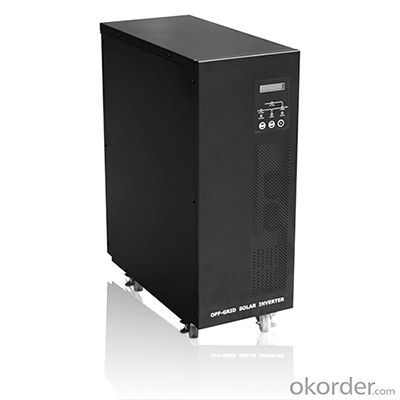

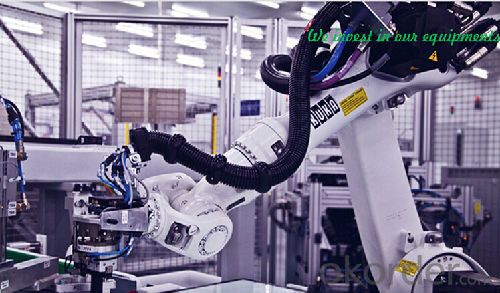

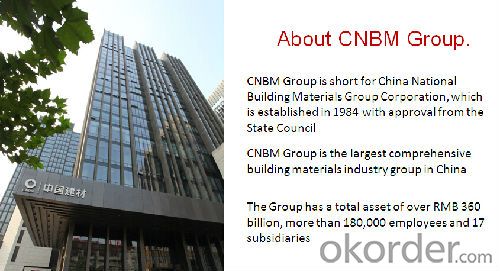

- Q:What is the role of a voltage regulator in a solar inverter?
- The role of a voltage regulator in a solar inverter is to maintain a stable and consistent voltage output from the solar panels. It ensures that the varying DC voltage produced by the panels is converted to a constant AC voltage suitable for powering electrical appliances. This helps to protect the connected devices from potential damage caused by voltage fluctuations and ensures optimal performance of the solar inverter system.
- Q:Can a solar inverter be used with solar-powered water heaters?
- No, a solar inverter cannot be directly used with solar-powered water heaters. The solar inverter is designed to convert the DC power generated by solar panels into AC power for general electrical use in households. On the other hand, solar-powered water heaters utilize direct thermal energy from the sun to heat water, without involving the need for converting DC power to AC power.
- Q:How does a solar inverter handle different temperature conditions?
- A solar inverter is designed to handle different temperature conditions by incorporating various features and mechanisms. Firstly, it is equipped with a temperature sensor that continuously monitors the inverter's internal temperature. If the temperature exceeds a certain threshold, the inverter activates cooling mechanisms such as fans or heatsinks to dissipate the heat and prevent overheating. Additionally, the inverter's components are selected and designed to withstand a wide range of temperatures, ensuring their functionality and longevity even in extreme conditions. Furthermore, modern inverters often have built-in protective measures like thermal derating, which reduces the inverter's power output as the temperature rises, ensuring it operates within safe limits. Overall, solar inverters are engineered to adapt and operate efficiently in varying temperature conditions for optimal performance and reliability.
- Q:Can a solar inverter be used with different types of power conditioning units?
- Yes, a solar inverter can be used with different types of power conditioning units. Solar inverters are designed to convert the DC power generated by solar panels into AC power that can be used by various electrical devices. They can be compatible with different types of power conditioning units, such as battery storage systems or grid-tied inverters, depending on the specific requirements and setup of the solar power system.
- Q:Can a solar inverter be used in a stand-alone solar system?
- Yes, a solar inverter can be used in a stand-alone solar system. Solar inverters are essential components in stand-alone solar systems as they convert the direct current (DC) generated by solar panels into alternating current (AC) that can be used to power appliances and devices. They also help regulate and control the flow of electricity within the system, ensuring efficient utilization of solar energy.
- Q:How does a solar inverter protect against overvoltage?
- A solar inverter protects against overvoltage by continuously monitoring the voltage levels of the solar panels. If the voltage exceeds a predetermined threshold, the inverter immediately reduces the power output or shuts down to prevent damage to the system.
- Q:Can a solar inverter be used with solar-powered electric vehicle charging stations?
- Yes, a solar inverter can be used with solar-powered electric vehicle charging stations. A solar inverter is responsible for converting the DC power generated by solar panels into AC power that can be used to charge electric vehicles. By using a solar inverter, the solar energy harvested from the panels can be efficiently utilized to charge EVs, making it an environmentally-friendly and sustainable option for charging stations.
- Q:How does a solar inverter handle voltage regulation during sudden load changes?
- A solar inverter handles voltage regulation during sudden load changes by continuously monitoring the voltage levels and adjusting the power output accordingly. When there is a sudden increase in load, the inverter will automatically increase its power output to meet the demand and maintain a stable voltage. Conversely, if there is a sudden decrease in load, the inverter will reduce its power output to prevent voltage spikes and maintain a consistent voltage level. This dynamic response allows the solar inverter to effectively regulate voltage during sudden load changes and ensure the stability and reliability of the solar power system.
- Q:What is the operating temperature range of a solar inverter?
- The operating temperature range of a solar inverter typically varies between -20°C to 60°C (-4°F to 140°F).
- Q:Can a solar inverter be used with a solar-powered data center?
- Yes, a solar inverter can be used with a solar-powered data center. A solar inverter is responsible for converting the direct current (DC) generated by solar panels into alternating current (AC) that can be used to power electrical devices. In the case of a solar-powered data center, the solar inverter would play a crucial role in converting the DC electricity produced by the solar panels into AC electricity that can be used to power the data center's servers, cooling systems, and other equipment.
1. Manufacturer Overview |
|
|---|---|
| Location | |
| Year Established | |
| Annual Output Value | |
| Main Markets | |
| Company Certifications | |
2. Manufacturer Certificates |
|
|---|---|
| a) Certification Name | |
| Range | |
| Reference | |
| Validity Period | |
3. Manufacturer Capability |
|
|---|---|
| a)Trade Capacity | |
| Nearest Port | |
| Export Percentage | |
| No.of Employees in Trade Department | |
| Language Spoken: | |
| b)Factory Information | |
| Factory Size: | |
| No. of Production Lines | |
| Contract Manufacturing | |
| Product Price Range | |
Send your message to us
Off-Grid Solar Inverter 3KW-8KW CE Approved AAA Quality with Best Price
- Loading Port:
- China main port
- Payment Terms:
- TT or LC
- Min Order Qty:
- 1 pc
- Supply Capability:
- 1000 pc/month
OKorder Service Pledge
OKorder Financial Service
Similar products
New products
Hot products
Hot Searches
Related keywords
